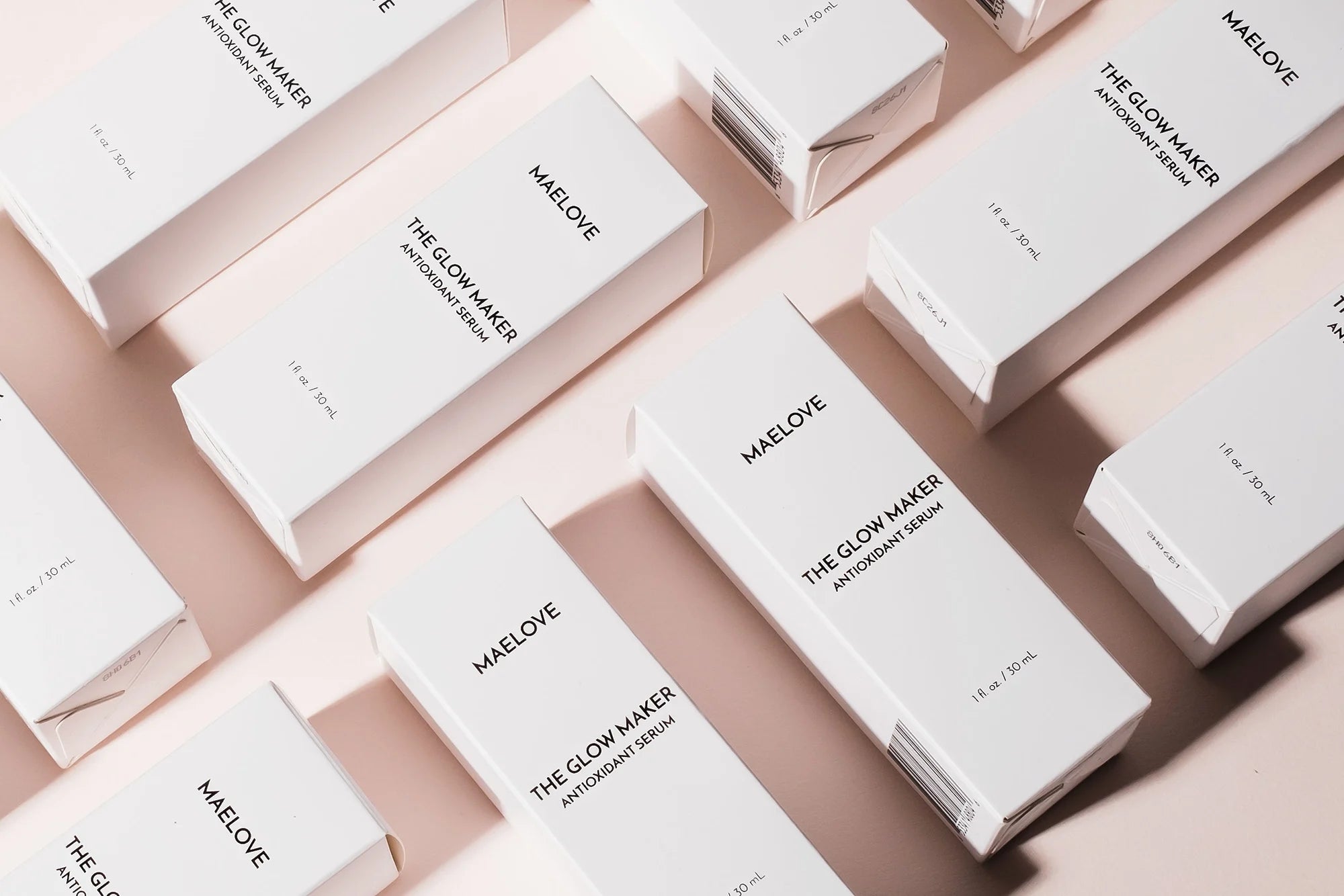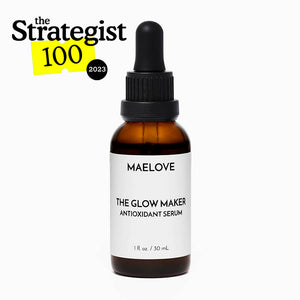Today we address the question: what causes hyperpigmentation during pregnancy and what can I do about it?
Why does it happen? In part it’s because the placenta is an endocrine organ and it releases hormones such as estrogen and progesterone. This will have wide-ranging effects throughout your body including your skin.
In hyperpigmentation, estrogen stimulates the cells that produce melanin, called melanocytes, and progesterone augments this effect (Sumit 2012).
Even when not pregnant, the menstrual cycle and oral contraceptives can also cause melasma due to these hormonal interactions with melanocytes, the melanin producing cells (Sheth and Pandya 2011).
First of all, for so many skincare ingredients, there is just not that much data about its safety of use during pregnancy and there is even less data about using ingredients during breastfeeding. And the reason is simple - people are reluctant to run tests on pregnant women, and rightly so. But the drawback is that we’re having to make choices with lack of good data, so it’s generally advised to err on the side of caution.
Overall, consult a dermatologist or OB/Gyn before adding anything new to your skincare routine or if you feel unsure about the safety of any existing skincare products you are using.
Pregnancy is a time when your body undergoes many rapid hormonal changes and a large majority - around 90% - of women notice some changes in their skin. And the most common changes are hyperpigmentation and stretch marks.
Changes in hair is common and it may include hirsutism, which means excessive hair growth in the face, chest and back. Some of you may notice a lusher mane during pregnancy.
Fortunately or unfortunately, the extra hair on your face and head will also fall out after pregnancy. In fact, the prolonged shedding of the excess hair may last for several months or more than one year after pregnancy (Tunzi 2007).
Your nails will grow faster during pregnancy but this also resolves postpartum. Vascular changes from estrogen changes can cause spider veins, reddened palms of hands, and varicose veins - but again these also usually regress postpartum (Tunzi 2007).
Now, going back to hyperpigmentation during pregnancy.
It may be termed melasma or older terms include chloasma or mask of pregnancy since for many women, it occurs or worsens mainly during pregnancy.
Melasma often resolves on its own postpartum. However, in many cases, melasma lasts for years beyond pregnancy (Sheth and Pandya 2011). Today we will go through what kind of skincare is deemed safe and what is deemed unsafe to use during pregnancy to treat hyperpigmentation.
First off, let’s talk about sunscreen
Sunscreen can help prevent melasma
Although your melasma is hormonally driven during pregnancy and it may develop even without any sun exposure, you should use sunscreen regularly.
A study conducted by Lakhdar and colleagues in 2007 found that the daily use of broad spectrum sunscreen in pregnant women reduced the rate of new melasma cases by more than ten times!
Without sunscreen, the probability of melasma in pregnancy is observed to be around 53%.
And with sunscreen it drops drastically to 2.7%.
We cannot stress this enough. The best cure for hyperpigmentation is to prevent it in the first place. Wear sunscreen!
Now, which sunscreen should you use?
You might have heard that chemical sunscreens should be avoided because oxybenzone can make it into your systemic circulation i.e. your bloodstream (Dinardo and Downs 2019). This is why some dermatologists will tell you that if you wish to err on the side of caution, you can avoid chemical sunscreens and use a mineral sunscreen that contains zinc or titanium dioxide.
Mineral sunscreens are basically ground up rocks, and they’re not absorbable into the skin (Putra et al 2022). The drawback of mineral sunscreen is that they tend to be more sticky and can leave residue on the skin unless you rub it in well. But I think the benefits far outweigh the inconvenience. Especially nowadays, there are plenty of great mineral sunscreens on the market to choose from even 10, 15 years ago.
Vitamin C (Ascorbic Acid) - Fine to use
Vitamin C also known as Ascorbic acid is both an antioxidant and a tyrosinase inhibitor that can help reduce hyperpigmentation.
Side Note: A tyrosinase inhibitor is a substance that helps to block the action of an enzyme called tyrosinase. Tyrosinase plays a key role in the production of melanin, which is the pigment responsible for the color of our skin, hair, and eyes. By inhibiting tyrosinase, these substances can help reduce the production of melanin, which can be helpful in treating skin conditions like hyperpigmentation or dark spots.
Oral Vitamin C has been found to be safe to take during pregnancy with no evidence of harm to the fetus.
It has also been rated Category A in pregnancy by the FDA which means Vitamin C has been evaluated by clinical trials in pregnant women and deemed safe. With Vitamin C, you can be confident that it is safe to use during pregnancy (Rumbold et al. 2015).
By the way, we go more in depth about FDA ratings for pregnancy safety in our Acne and Pregnancy video. I’ll include a link to that video below.
Click here for our Acne and Pregnancy video
Azaleic acid - Fine to use
Azaleic acid is another tyrosinase inhibitor like vitamin C. And it’s probably the ingredient that dermatologists recommend the most for treating melasma in pregnant women
Azelaic acid is considered safe to use during pregnancy. Azelaic acid is a normal constituent of milk, and it’s also found in wheat, rye and barley. So it’s something that people ingest all the time. Just like Vitamin C.
Azelaic acid is rated Category B by the FDA, which means it is considered safe based on animal studies. There were no fetal effects in animals. There are no studies of Azelaic Acid in pregnant human women, but that’s the case for most ingredients. In general, Category B ingredients are also deemed safe to use during pregnancy.
However, azelaic acid may not be the most potent tyrosinase inhibitor but due to its favorable safety profile, can be offered at high concentrations including 10% OTC, and up to 20% through prescription. 20% azelaic acid performs comparably to 4% hydroquinone (Balina and Graupe 1991). Arbutin and kojic acid are more potent tyrosinase inhibitors, but if you’re pregnant or nursing then azelaic acid might be the better option and I’ll mention later why.
Azelaic acid is also anti-microbial, so you might see it featured in anti-acne products. So if you’re pregnant and have skin problems, azelaic acid is a good ingredient.
Hydroquinone - Definitely do not use
In terms of treating hyperpigmentation, hydroquinone is considered a highly effective treatment option by doctors. However, it has many downsides-including that it is considered unsafe and toxic by the cosmetic ingredient review (CIR) due to the risks of exogenous ochronosis, skin bleaching, and toxicity to melanocytes. Hydroquinone is banned in Europe. And it was almost banned in the US and now available only with prescription.
Now, when it comes to pregnancy, there are more problems. Because hydroquinone is really good at penetrating the skin - and get into your bloodstream.
It’s estimated that out of the hydroquinone that’s topically applied, 35 to 45% of that hydroquinone can get into your bloodstream (Bozzo et al. 2011, Murase et al. 2014).
This is a ton. Because most skincare ingredients do not reach your bloodstream at all.
So, this high level of absorption is one of the reasons hydroquinone is not recommended during pregnancy even though it isn’t known to be particularly toxic to a developing fetus.
Why risk absorbing a substance considered toxic when you have other safe alternatives? Overall, hydroquinone is considered a hard no. Hydroquinone is often combined with a corticosteroid which also must be taken with caution during pregnancy as corticosteroids can stunt fetal growth.
Retinoids - Definitely do not use
Retinoids are a true do-it-all ingredient. It’s the first ingredient mentioned for anti-aging and acne. And it’s also one of the top ingredients used to treat hyperpigmentation.
But retinoids - both oral and topical - are considered unsafe to use while pregnant due to the risk of birth defects.
Retinoids are Vitamin A derivatives, and Vitamin A is crucial for many functions in the body including proper fetal development.
The problem lies in the high amounts of Vitamin A that enter your blood circulation when you take retinoids. These high amounts lead to birth defects in your developing fetus, something called retinoid embryopathy.
In fact, when Accutane, which is an oral retinoid, was first introduced in 1982, there were hundreds of reports of birth defects that occurred as a result (AAD). So, it’s not like anyone deliberately ran tests on pregnant women to see if retinoids caused birth defects. But we learned from painful experiences to not prescribe this anymore to pregnant women.
Topical retinoids are much less likely to reach your bloodstream than oral retinoids.
And clinical studies suggest that topical retinoids like tretinoin do not raise overall serum Vitamin A levels in the blood nor do they lead to retinoid embryopathy.
However, there are reported cases and anecdotal evidence that topical retinoid use is associated with birth defects in rare instances (Bozzo 2011, Murase et al. 2014). So it’s just not worth it. Overall, considering there are other options to treat hyperpigmentation, retinoids during pregnancy are a hard no.
Arbutin - Maybe
Arbutin is a compound derived from the bearberry plant that is a great hyperpigmentation fighter. Arbutin is what’s called a tyrosinase inhibitor.
There are two types of arbutin which are considered safe by the CIR, alpha and beta arbutin. Alpha arbutin is the form of arbutin commonly found in skincare products and is a derivative of hydroquinone though again, unlike hydroquinone, it is considered safe to use by the CIR.
The concern over arbutin is based on studies that have shown skin bacteria and UV can lead to hydrolysis of alpha arbutin into hydroquinone although this amount is believed to be small (Boo 2021, Garcia-Jiminez et al. 2017). But, due to this association with hydroquinone, some dermatologists will recommend that pregnant women do not use arbutin.
Some dermatologists will tell you it is safe to use during pregnancy, while others will say it’s better to err on the side of caution and also classify this ingredient as a no.
At Maelove, we recommend that you first speak with your doctor about this ingredient to get their opinion. Personally, as a pregnant woman myself, I have been using this ingredient in our Fade Away brightening serum. But, do what feels comfortable for you and consult your doctor with any concerns you may have.
Tranexamic Acid (TXA) - Maybe
Tranexamic Acid has a unique pathway to prevent melanin production (Sheth and Pandya 2011b). The mechanism of its action has been mapped out and it blocks both UV and pregnancy/hormonally induced hyperpigmentation (Maeda and Tomita, 2007, see figure reproduced from Atefi et al. 2017).
In a direct matchup against hydroquinone, a clinical trial showed 5% TXA was as effective as 2% hydroquinone in reducing melasma spot area and intensity but with less skin dryness and irritation and higher satisfaction level (Atefi et al. 2017).
Given its unique mechanism of blocking pregnancy related hyperpigmentation via inhibition of plasminogen activator and plasmin, it is ideal for hormonal melasma. Further, it appears to be safe in pregnancy. Oral TXA is used in pregnant women to prevent hemorrhage as TXA is also involved in blood clotting.
So, topical TXA is rated Category B by the FDA which means it is generally considered safe.
That being said, because high concentrations of TXA can cause blood clotting, some dermatologists and OB/Gyns may have differing recommendations on whether to use TXA during pregnancy even though the concentrations used to treat hyperpigmentation are much lower than those used to prevent hemorrhage.
At Maelove, we feel it would be a good idea to speak to your dermatologist and OB/Gyn if you’re interested in using tranexamic acid.
Kojic Acid - Maybe
Kojic acid doesn’t seem to reach the bloodstream in substance, so it has what medical professionals would call low systemic absorption, which is good for pregnancy.
There also have been animal studies that showed no risk to fetal development.
However, there have been no human studies, and furthermore the FDA has no rating on Kojic acid.
For this reason, some doctors would err on the side of caution and not recommend kojic acid during pregnancy, while other doctors would say kojic acid is fine.
At Maelove, we recommend that you first speak with your doctor about this ingredient to get their opinion. Personally, as a pregnant woman myself, I have been using this ingredient in our Fade Away brightening serum. But, do what feels comfortable for you and consult your doctor with any concerns you may have.
Laser and Light Therapy - Maybe
And finally, this is not a skincare product, but resurfacing with fractionated laser is FDA approved to be used to treat melasma.
Intense Pulsed light (IPL) therapy has also shown promise as well.
With these laser therapies, there are risks of post-inflammatory hyperpigmentation, which potentially worsens the problem. Because of this, laser and light therapies are usually recommended only after topical treatments have failed (Sheth and Pandya 2011b).
While laser and light therapies are generally regarded as safe to use during pregnancy, the numbing solution could affect the developing fetus. Hence, consult a dermatologist before getting a laser treatment (Pugasheti 2013).
Recap
So to recap, the first thing to do is to be cautious about sun exposure.
Azelaic acid and Vitamin C appear to be the least controversial ingredients to use during pregnancy.
Arbutin, Tranexamic acid and Kojic acid are all great ingredients for melasma but since there may be differing opinions on these ingredients, run it by your doctor first.
And finally, hydroquinone and retinoids should be avoided.





